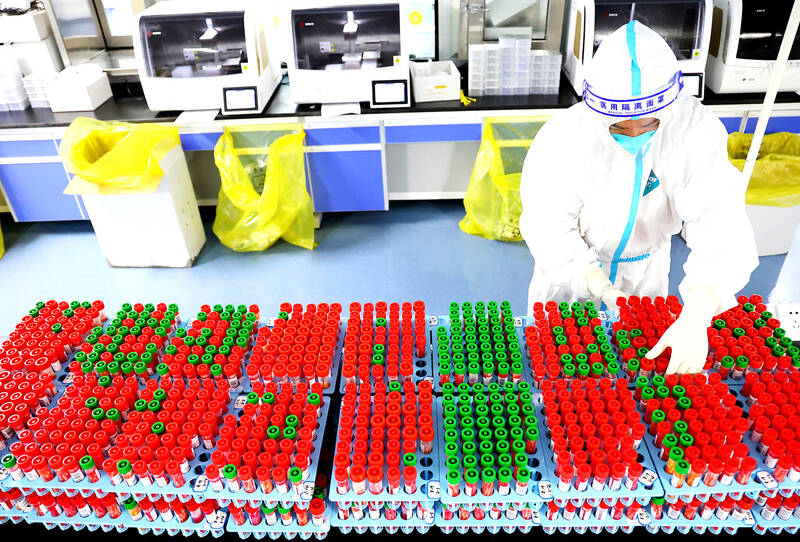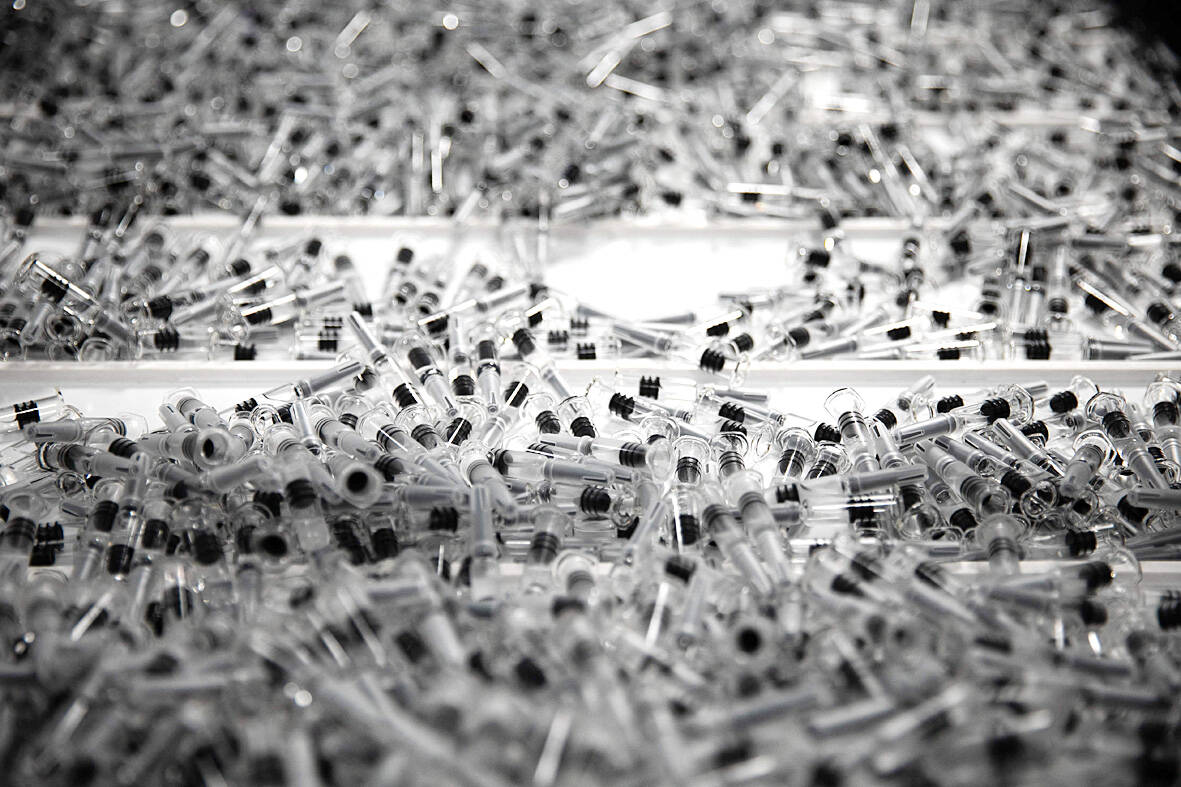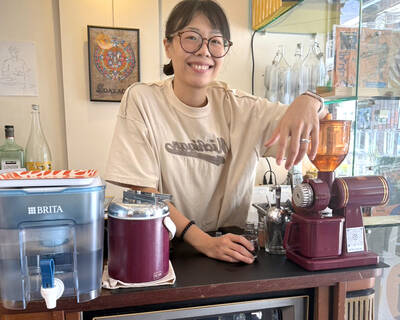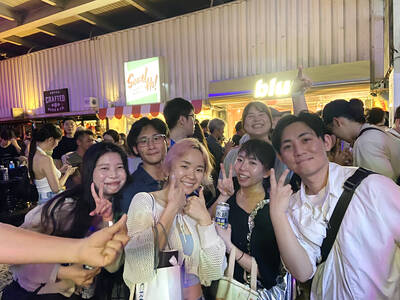It’s 1am on the west coast of America, but the Emerald Cloud Lab, just south of San Francisco, is still busy. Here, more than 100 items of high-end bioscience equipment whirr away on workbenches largely unmanned, 24 hours a day and seven days a week, performing experiments for researchers from around the world. I’m “visiting” via the camera on a chest-high telepresence robot, being driven round the 15,000 square foot lab by Emerald’s CEO, Brian Frezza, who is also sitting at home. There are no actual scientists anywhere, just a few staff in blue coats quietly following instructions from screens on their trolleys, ensuring the instruments are loaded with reagents and samples.
Cloud labs mean anybody, anywhere can conduct experiments by remote control, using nothing more than their web browser. Experiments are programmed through a subscription-based online interface — software then coordinates robots and automated scientific instruments to perform the experiment and process the data. Friday night is Emerald’s busiest time of the week, as scientists schedule experiments to run while they relax with their families over the weekend.
There are still some things robots can’t do, for example lifting giant carboys (containers for liquids) or unwrapping samples sent by mail, and there are a few instruments that just can’t be automated. Hence the people in blue coats, who look a little like pickers in an Amazon warehouse. It turns out that they are, in fact, mostly former Amazon employees.

Photo: AFP
Emerald originally employed scientists and lab technicians to help the facility run smoothly, but they were creatively stifled with so little to do. Poaching Amazon employees has turned out to be an improvement.
“We pay them twice what they were getting at Amazon to do something way more fulfilling than stuffing toilet paper into boxes,” Frezza says. “You’re keeping someone’s drug-discovery experiment running at full speed.”
Further south in the San Francisco Bay Area are two more cloud labs, run by the company Strateos. Racks of gleaming life science instruments — incubators, mixers, mass spectrometers, PCR machines — sit humming inside large Perspex boxes known as workcells. The setup is arguably even more futuristic than at Emerald. Here, reagents and samples whizz to the correct workcell on hi-tech magnetic conveyor belts and are gently loaded into place by dextrous robot arms. Researchers’ experiments are

Photo: AFP
“delocalized,” as Strateos’s executive director of operations, Marc Siladi, puts it.
Automation in science is nothing new, especially in fields such as molecular biology, where much of the experimental work involves the laborious and repetitive transfer of tiny quantities of liquid from one vial to another. The disruption caused by the pandemic also encouraged a number of specialist facilities to develop ways to operate their equipment remotely. (The beams of the UK’s powerful Diamond Light Source, for example, a particle accelerator that generates ultra-high energy radiation to investigate matter, can now be operated by users from anywhere in the world.) And outsourcing difficult or time-consuming elements of the experimental process is not new either.
‘PAY AND PLAY’

Photo: AFP
But Emerald and Strateos are different — these are the world’s first laboratories that in theory allow anyone with a laptop and credit card to “pay and play” with the entire reagent inventory and suite of instrumentation available in a world-class research facility. The appeal of this approach became obvious during the pandemic, when many researchers were unable to visit their own labs in person; the founders of cloud labs say this is the future of life science.
The most obvious benefit is productivity: researchers can conduct several experiments at once and queue them up to run overnight or while they do other things. “Our pro-users, they’ll do the work of 10 scientists in a traditional lab,” says Frezza. “They’ll crank ridiculous numbers.”
There’s no time spent setting up and tearing down equipment, cleaning up, maintaining and fixing instruments or replenishing stock. Arctoris, a remote-operated drug discovery lab in Oxfordshire, says its platform has completed projects for pharmaceutical companies in 24 hours that might take at least a week in a traditional setting. Instead of pipetting for hours each day, researchers can spend more time thinking, reading, and analysing results with colleagues.
Scientists at Pittsburgh’s Carnegie Mellon University were so impressed by what staff and students could do at the Emerald Cloud Lab — one researcher managed to recreate years of his PhD experimentation in a matter of weeks — that they recently asked the company to build another one, just for them.
With a year’s worth of access to a cloud lab often costing less than the price of a single piece of high-end lab equipment, the dean of Carnegie Mellon’s college of science, Rebecca Doerge, says the model could be transformational.
“I’m not interested in just changing science at Carnegie Mellon. I’m interested in changing the process of science worldwide,” she says of the new facility in Pittsburgh. “We all have colleagues in under-resourced places that can’t do the science that they’re capable of just because they don’t have enough money. So with an Internet connection and access to a cloud lab, this is a game-changer.”
Doerge, a statistician turned science administrator, is also excited about removing variation and human error from experimental work. There will be no scientists based at the new 16,000 square foot site, just half a dozen technicians helping the place run 24 hours a day.
“People still go to wet labs and they still stand there and they make mistakes. I don’t think that everything is automatable in science, I’m not saying that. I’m just saying that the repetitive stuff, once you learn it, you don’t need to stand there and do it over and over and over again.”
FIXING THE ‘REPRODUCIBILITY CRISIS’
Scientists such as Doerge believe the precision of remote-operated labs could help fix what has become known as science’s “reproducibility crisis” — the worrying revelation that the results of troves of published research can’t be replicated when different groups of scientists follow the same methods exactly. Plugging an experiment into a browser to be performed by robots forces researchers to translate the exact details of every step into unambiguous code.
For example, what once might have been described in a scientific paper as “mix the samples” becomes detailed computer instructions for a certain machine to mix at a certain number of rotations a minute for a certain time.
Other factors that could affect the result, such as the ambient temperature at the time, are captured in the metadata.
As Doerge has encouraged more and more research — and even teaching — at Carnegie Mellon to be transferred to the remote labs, not all of her colleagues have been supportive. Many scientists think that working alongside colleagues at the bench and the sights and sounds of experimentation are what help generate exciting ideas and happy accidents. Others have concerns about the quality of data produced in labs they’ve never set foot in.
“’If I don’t see it with my own eyes, it doesn’t exist’ — I’ve heard that from some of the senior faculty members,” says Doerge. “It’s a mindset shift for sure.”
BIOSECURITY THREAT?
Some experts believe that making access to sophisticated labs this easy is a potential biosecurity or bioterrorism threat. In theory, small groups or even individuals with no research experience could use a cloud lab to start performing complex biological experiments.
“The labs are saying they only work with trusted partners, but of course they are very keen to open their market,” says Filippa Lentzos, an expert in biological risk and biosecurity at King’s College London. “Even though we must remember most people come from a good place, there are some pretty crazy people out there too. Barriers are most definitely coming down if you want to deliberately do something harmful.”
Cloud labs say that they review all scheduled experiments and have systems to flag or reject any that appear illegal or dangerous. Plus, they argue, the complete digitization of everything happening in the lab actually makes it easier to record and monitor what people are doing than in a traditional lab.
Paul Freemont, co-founder of the UK Innovation and Knowledge Center for Synthetic Biology, has helped develop several highly automated labs in the UK, including a robotic platform that was able to conduct more than 1,000 COVID-19 tests a day early in the pandemic. He is not sure that remote-operated labs are yet “mature” enough to replicate what is available to scientists who set up their own automated equipment.
“I like the concept and think this is the way science is going to go. It would work if we had all the necessary protocols and workflows that a biologist might need, but I think that’s not currently available to the level of complexity and detail that one needs.”
Freemont also has concerns about scientists not truly understanding or engaging with the software or the hardware that generates their data.
“You have to have the next generation of scientists understand how to build all this infrastructure themselves and how to work with it — you have to have some hands-on experience, surely. The potential for a few labs or big private companies to monopolize that understanding — I don’t think would be very healthy.”
Despite these concerns, the appetite for cloud science is growing.
Emerald is expanding capacity to keep up with demand, mostly from pharmaceutical companies and biotech startups. Strateos is working with the US research agency Darpa to study in detail how its facilities can improve reproducibility and efficiency of previous experiments and the company is also licensing its software so that other institutions can convert their facilities.
In future, cloud labs may even decide what experiments to do themselves.
As Google’s DeepMind platform has recently proved, machine-learning tools can now gobble up decades’ worth of data and spit out answers to questions that would take scientists many years to solve with physical inquiry. Pharmaceutical companies are increasingly using these tools to simulate molecular interactions in their search for new drugs. Data generated through cloud labs — which translate biology into an information technology — would only make these tools more powerful.
Combining all these technologies could one day lead to systems that can develop theories and physically test them without human input.
Already, some advanced Emerald Cloud Lab users have developed algorithms that adjust the parameters or direction of the next experiment based on their own data analysis.
“It’s kind of wild stuff, very futuristic,” Frezza says.
All this means scientists are the latest profession to ask what the move towards automation and AI means for the future. Could more traditional research scientists one day find themselves out of a job? It’s unlikely — after all, we’ll always need people to prioritize which questions need answering and develop new ways to answer them. But the days of sitting at a bench in a white coat and gloves beside the flame of a Bunsen burner may soon be a thing of the past — the era of the robot researcher is coming.

Cheng Ching-hsiang (鄭青祥) turned a small triangle of concrete jammed between two old shops into a cool little bar called 9dimension. In front of the shop, a steampunk-like structure was welded by himself to serve as a booth where he prepares cocktails. “Yancheng used to be just old people,” he says, “but now young people are coming and creating the New Yancheng.” Around the corner, Yu Hsiu-jao (饒毓琇), opened Tiny Cafe. True to its name, it is the size of a cupboard and serves cold-brewed coffee. “Small shops are so special and have personality,” she says, “people come to Yancheng to find such treasures.” She

Late last month Philippines Foreign Affairs Secretary Theresa Lazaro told the Philippine Senate that the nation has sufficient funds to evacuate the nearly 170,000 Filipino residents in Taiwan, 84 percent of whom are migrant workers, in the event of war. Agencies have been exploring evacuation scenarios since early this year, she said. She also observed that since the Philippines has only limited ships, the government is consulting security agencies for alternatives. Filipinos are a distant third in overall migrant worker population. Indonesia has over 248,000 workers, followed by roughly 240,000 Vietnamese. It should be noted that there are another 170,000

Hannah Liao (廖宸萱) recalls the harassment she experienced on dating apps, an experience that left her frightened and disgusted. “I’ve tried some voice-based dating apps,” the 30-year-old says. “Right away, some guys would say things like, ‘Wanna talk dirty?’ or ‘Wanna suck my d**k?’” she says. Liao’s story is not unique. Ministry of Health and Welfare statistics show a more than 50 percent rise in sexual assault cases related to online encounters over the past five years. In 2023 alone, women comprised 7,698 of the 9,413 reported victims. Faced with a dating landscape that can feel more predatory than promising, many in

“This is one of those rare bits of TikTok fitness advice with a lot of truth behind it,” says Bethan Crouse, performance nutritionist at Loughborough University. “Sometimes it’s taken a bit too literally, though! You see people chugging protein drinks as they’re scanning out of their gym.” Crouse recommends the athletes she works with consume 20-30g of protein within 30-60 minutes of finishing a resistance training session. “The act of exercising our muscles increases the breakdown of muscle proteins,” she says. “In order to restore, or hopefully improve them — and get gains such as increased muscle mass or strength —